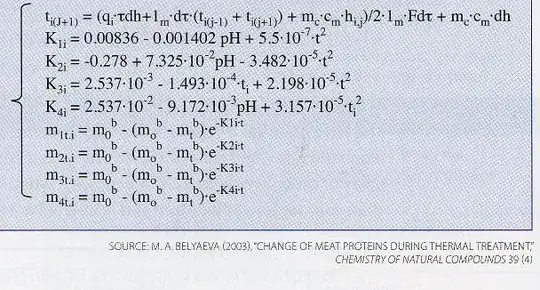Often, when you buy meat from the store, it comes with guidance on how long the meat needs to be roasted, presumably calculated as a function of its weight. Is there some well known general algorithm for calculating how long to roast various types of meat (e.g. for display on packaging).
Perhaps something like:
roasting time = c * weight of meat
Assuming the algorithm is this simple, is there some reference of ideal oven temperatures and scaling constant c for each type of meat (chicken, beef, pork etc)?
Relatedly, is there a well known set of algorithms for converting between say, fan oven, AGA, and/or gas mark standards for oven temperature?
I'm assuming these facts must be well known in meat supplier's product development departments, due to the labeling I see on meat that I buy. However, having Googled it a fair bit, I can't find these details summarized anywhere.
